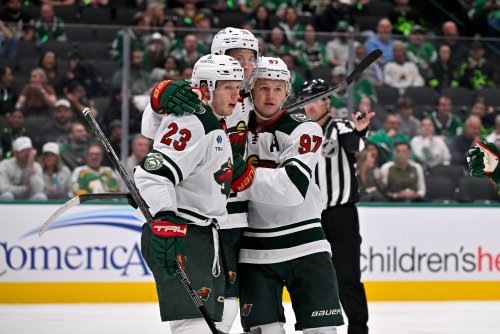
After a long wait on trade deadline day, the Minnesota Wild made just two actual deals in which players were swapped for assets on other teams. Mikael Granlund was traded to the Nashville Predators in exchange for Kevin Fiala, and Matt Hendricks was moved for a 2020 7th round pick. Of the players rumored to have garnered interest, Eric Staal was not dealt.
After the deadline passed, it was announced that Staal had signed a contract extension worth $6.5 million over the next two years. Staal, 34 years old, didn’t want to go anywhere else and engineered his 10-team no-trade list to ensure that he can dictate where and when he left Minnesota.
So why lock up Staal for two more seasons at 34 years old? There’s simply no one ready to take on Staal’s job. With the trade of Granlund, the amount of centers on the team took a hit. It put quite the dent into a team that was already hurting for centers in the organization. Sure, there some that are under contract in the AHL in Mason Shaw, Sam Anas, and Dmitry Sokolov, those players are likely not going to make the NHL by the start of next season.
Center isn’t an easy position to replace through free agency. When there is one available, teams pay a pretty hefty price for talented centers. Staal is a known commodity, capable of producing points, taking on top-level competition, and he’s cheap. He’s been perhaps the most valuable player, in terms of performance-to-cost since he’s come to Minnesota. With the extension, Staal continues to be cheap with a $3.25 AAV even as his age creeps closer to 40.
It’s also his production. Staal is clearly on the wrong side of 30. Father Time is undefeated, and Staal will likely never repeat the 42 goal campaign he had in 2017-18. That said, even with his slide, playing $3.25 million dollars for a center to play heavy minutes and chip in roughly 40-50 points for two more seasons while the kids develop is relatively low risk. This signing is more out of necessity and convenience, which, when done in a low-risk manner can pay dividends in the long run.
In the first two seasons with the Wild, Staal scored at roughly a 0.86 point per game pace. This season has been considerably worse at just over 0.66 points per game. That a 23 percent reduction in production. If we took that same 23 percent drop in points per game from his 141 points in the first two seasons and assume that drop will be reflected in his raw point totals, the Wild are looking at roughly 109 points over the next two seasons from Staal. That’s obviously the best-case scenario, but also not completely out of reach given the minutes and situations Staal is still commanding. The question is with the recent roster changes, does he get the kind of help from his teammates in terms of assists and getting set up for goals like he had been?
Fenton is taking a risk on the Thunder Bay native. However, looking at it more in-depth, it’s a very calculated risk.
Think you could write a story like this? Hockey Wilderness wants you to develop your voice, find an audience, and we'll pay you to do it. Just fill out this form.








Recommended Comments
There are no comments to display.
Join the conversation
You can post now and register later. If you have an account, sign in now to post with your account.
Note: Your post will require moderator approval before it will be visible.